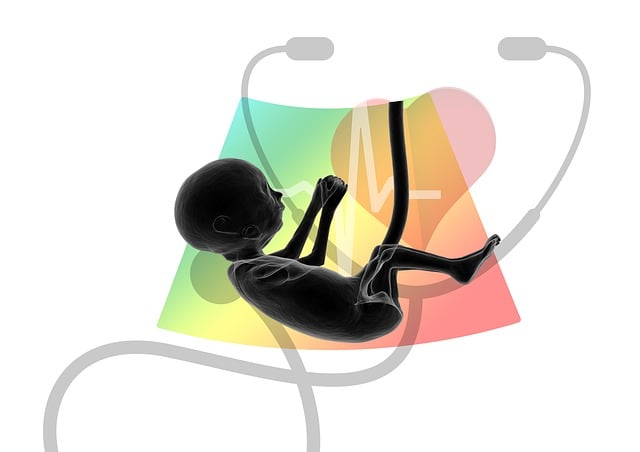Contrast media for ultrasound enhance diagnostic accuracy by improving image quality and depth of insight. These agents interact with ultrasound waves to highlight tissues and organs, aiding in cell type differentiation, abnormality detection, and blood flow assessment. Future advancements focus on improved pharmacokinetics, longer retention times, reduced toxicity, and enhanced target specificity through innovative materials like microbubbles and nanostructures. This revolutionizes ultrasound imaging, delivering clearer pictures for more accurate diagnoses and better patient outcomes across specialties including oncology, cardiology, and obstetrics, while prioritizing safety.
“The field of ultrasound diagnostics is experiencing a revolution with advancements in contrast media, enhancing image quality and diagnostic capabilities. This article explores future innovations in contrast media designed for ultrasound, focusing on their potential to revolutionize imaging. We delve into the improved visualization offered by next-generation agents, their tailored applications, and safety considerations. By examining these developments, we highlight the exciting trajectory of contrast media for ultrasound, promising more accurate and efficient diagnostics.”
Enhancing Ultrasound Images: The Role of Contrast Media
Ultrasound contrast media plays a pivotal role in enhancing diagnostic capabilities by improving image quality and depth of insight. These specialized agents, when injected into the patient, interact with ultrasound waves to produce distinct signals, allowing for better visualization of internal structures. By highlighting specific tissues or organs, contrast media enables sonographers to differentiate between various types of cells, detect abnormalities, and assess blood flow more accurately.
Advanced formulations of contrast media are being developed to address current limitations, such as short retention times and potential side effects. Researchers are exploring novel materials with improved pharmacokinetics, longer-lasting effects, and reduced toxicity. These future advancements promise to revolutionize ultrasound imaging by providing clearer, more detailed pictures, ultimately leading to more accurate diagnoses and better patient outcomes.
Next-Generation Contrast Agents: Properties and Benefits
Next-generation contrast agents for ultrasound diagnostics are being developed with enhanced properties that promise improved imaging accuracy and efficiency. These advanced agents are designed to better interact with ultrasonic waves, resulting in higher contrast resolution and deeper penetration into tissues. Key attributes include improved target specificity, longer circulation times, and reduced toxicities, all of which contribute to more detailed and reliable diagnostic information.
By incorporating novel materials like microbubbles, nanostructures, and targeted molecular probes, next-gen contrast media can specifically bind to pathologic lesions, such as tumors or inflamed areas, making them easier to visualize. This targeted delivery not only improves diagnostic sensitivity but also reduces the potential side effects associated with off-target interactions, enhancing overall patient safety.
Targeted Contrast Media for Specific Diagnostic Needs
The future of ultrasound diagnostics looks promising with advancements in contrast media designed for specific diagnostic needs. Researchers are developing targeted contrast agents that can enhance the visibility of particular structures or abnormalities within the body. These innovative contrast media are engineered to bind specifically to certain cell types, tissues, or pathologies, allowing for more precise and accurate imaging.
By tailoring contrast media to specific diagnostic requirements, healthcare professionals can expect improved sensitivity and specificity in ultrasound examinations. This technology enables better detection of subtle changes, such as early-stage tumors or small lesions, enhancing the overall diagnostic capabilities of ultrasound. Such advancements hold great potential to revolutionize various medical specialties, including oncology, cardiology, and obstetrics, by providing more detailed and reliable information for patient care.
Safety and Future Directions in Ultrasound Contrast Media Development
The development of ultrasound contrast media (UCM) has evolved significantly, focusing on enhancing diagnostic accuracy while ensuring patient safety. As technology advances, future directions in UCM development will prioritize improving safety profiles and expanding application versatility. Researchers are exploring innovative options, such as biodegradable and bio-compatible materials, to minimize potential side effects associated with current UCMs. These efforts aim to make ultrasound a more accessible and safer diagnostic tool for various conditions.
Additionally, integrating advanced imaging technologies with UCM could lead to groundbreaking improvements in diagnostic capabilities. The combination of real-time ultrasound with enhanced contrast resolution could enable early detection and better characterization of pathologies, thereby revolutionizing healthcare practices. Such developments hold immense potential to improve patient outcomes and reduce the need for more invasive diagnostic procedures.
The future of ultrasound diagnostics looks bright with continuous advancements in contrast media. By combining enhanced image quality, targeted delivery systems, and safer agents, healthcare professionals can expect improved diagnostic accuracy and patient outcomes. Next-generation contrast agents offer promising properties that cater to specific diagnostic needs, revolutionizing the way we perform ultrasounds. Continued research and development in this field will undoubtedly lead to innovative solutions for better ultrasound imaging and broader clinical applications of contrast media.
